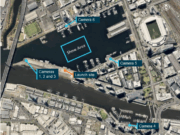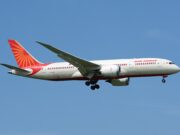Operators of small drones in the United States would be permitted to fly the devices at night and above people on the ground according to rules that the U.S. Federal Aviation Administration (FAA) says it plans to propose soon.
Transportation Secretary Elaine Chao, in remarks prepared for delivery Monday at the annual meeting of the Transportation Research Board, said the initiatives will be “a major step forward in enabling the safe development, testing and deployment of drones in our country.”
The U.S. Federal Aviation Administration (FAA), in a draft document intended for publication at an unspecified date in the Federal Register, said that the proposed new rules would be “the next step in the FAA’s incremental approach to integrating UAS [unmanned aircraft systems] into the National Airspace System (NAS), based on demands for increased operational flexibility and the experience FAA has gained” since the existing regulations were first presented.
Specifically, the proposed rules would allow operations above people and at night under certain conditions, without first obtaining a waiver of existing requirements.
The FAA said that a companion proposal seeks “public input to identify major drone safety and security issues that may pose a threat to other aircraft, to people on the ground or to national security as drones are integrated into our national airspace.”
Organizations representing drone operators praised the government’s actions as a step forward for the commercial drone industry.
“Expanded operations, such as operations over people, are currently allowed through the FAA’s waiver process on a case-by-case basis,” said Brian Wynne, president and CEO of the Association for Unmanned Vehicle Systems International (AUVSI). “A rule that allows for widespread operations over people without requiring a waiver will allow more operators to harness the great potential of UAS.”
Wynne also praised the companion proposal, which he said would examine “operational limitations, airspace restrictions, hardware requirements and associated identification and traffic technologies, [which] will further shape a national UAS policy.”
Chad Budreau, executive director of the Academy of Model Aeronautics (AMA), whose members fly for recreational and educational purposes and operate according to AMA rules, said that, although the FAA’s proposal would not have a significant impact on AMA members, “we believe these operations should be allowed, provided they can be done safely and any potential risk to people on the ground is appropriately mitigated.”
The FAA said it also is conducting a pilot project this year to demonstrate a traffic management system that integrates drone flights into a portion of the national airspace. The Drone Traffic Management Pilot Project will run through September at sites in Nevada, North Dakota and Virginia.
Contracts were awarded “to mature technologies for unmanned aircraft traffic management, including flight planning, communications, aircraft separation and weather services for these drones, which will operate under 400 feet,” the FAA said.


